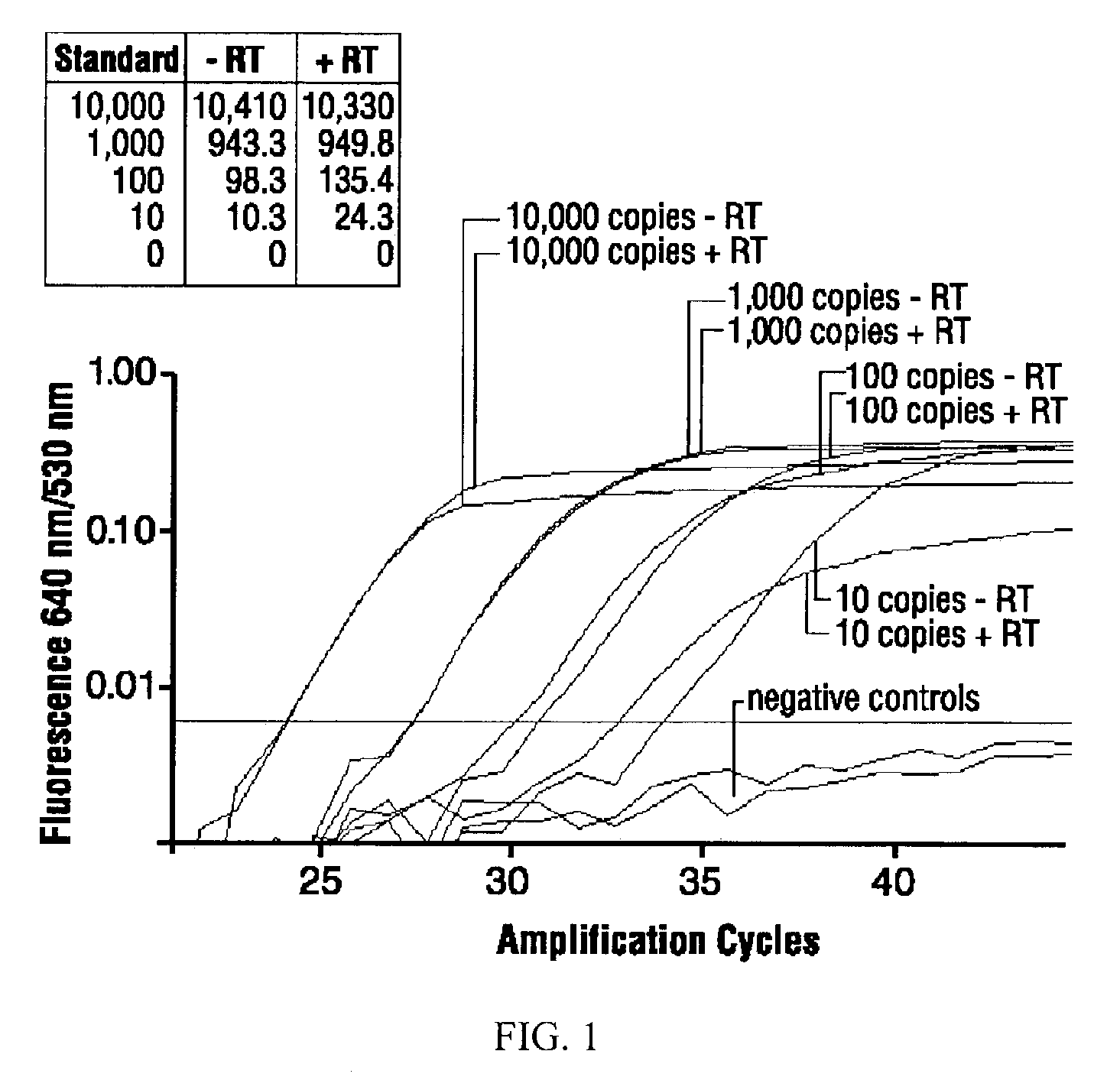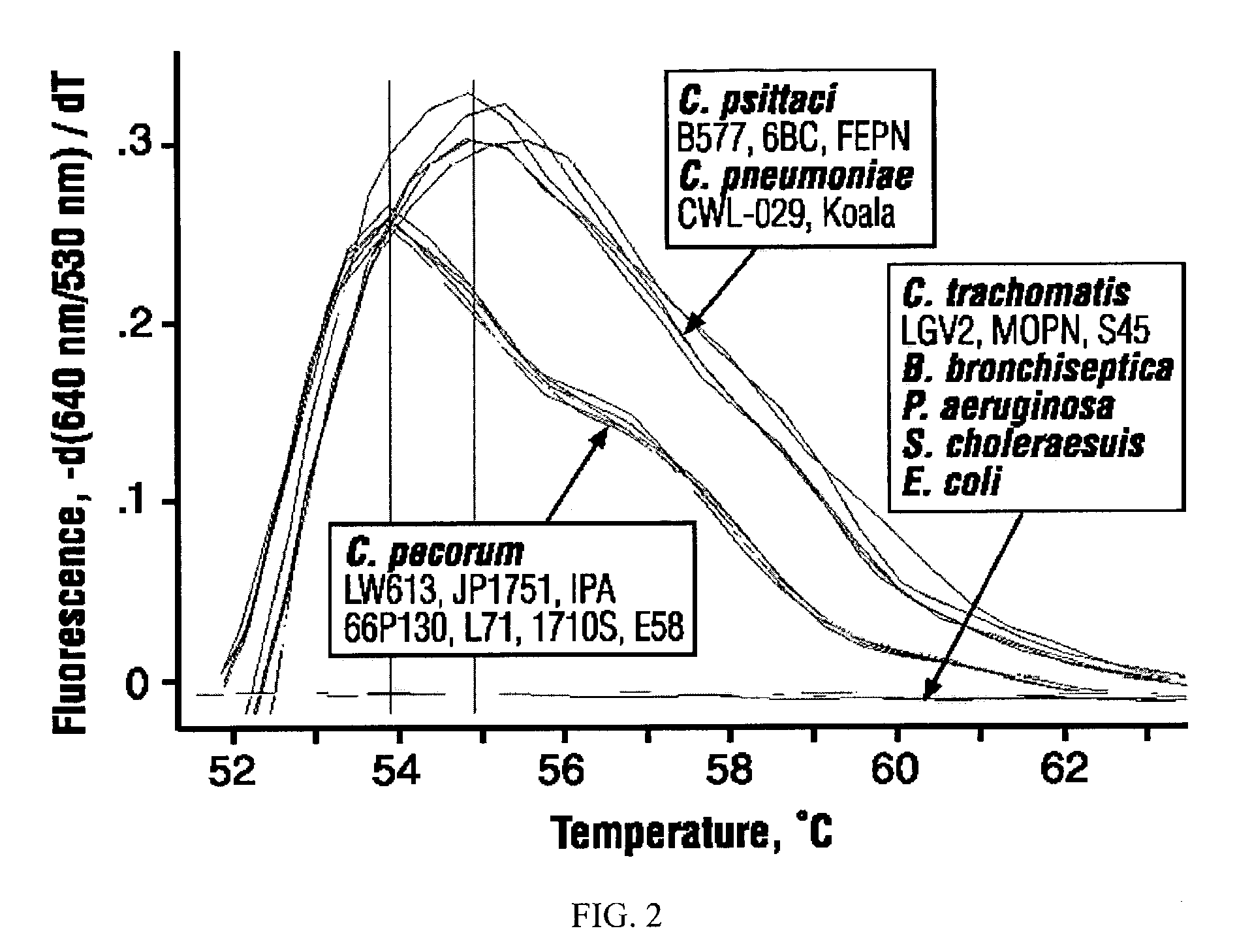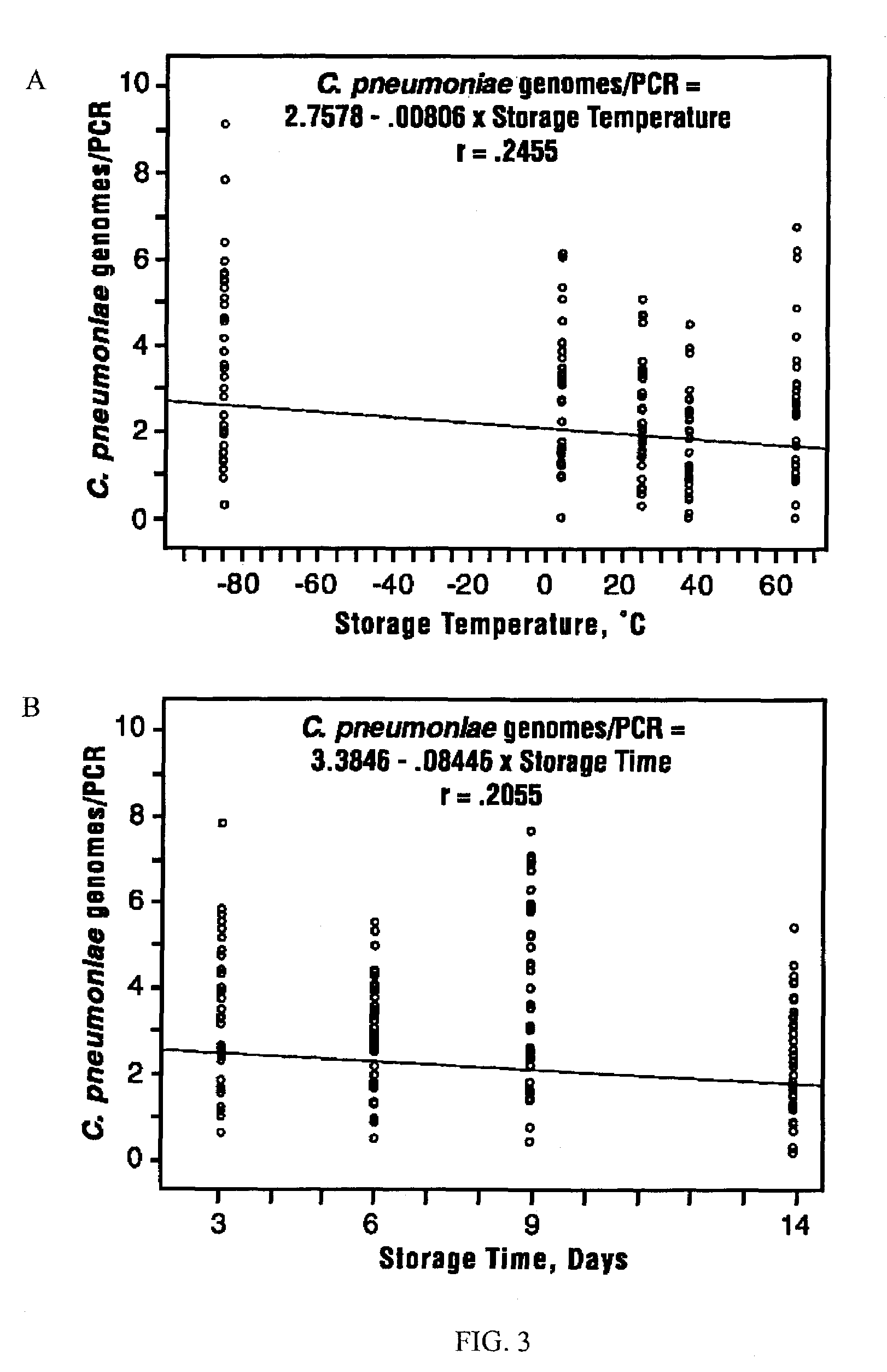High-sensitivity real-time polymerase chain reaction for detection of nucleic acids
a real-time polymerase chain reaction and nucleic acid technology, applied in the field of detection and amplification of nucleic acids, can solve the problems of impeded optimal diagnostic use of the high sensitivity of this method, poor preservation of nucleic acid targets in specimens, and insufficient retrieval of targets by dna or nucleic acid extraction methods, so as to increase the sensitivity of nucleic acid detection and increase the stabilization, extraction and amplification of nucleic acid
- Summary
- Abstract
- Description
- Claims
- Application Information
AI Technical Summary
Benefits of technology
Problems solved by technology
Method used
Image
Examples
example 1
Chlamydial Strains and Mouse Lung Infection
[0057]C. psittaci strain B577 (ATCC VR-656) and C. pneumoniae strain CDC / CWL-029 (ATCC VR-1310) were grown in BGMK cells and purified as previously described (Huang, J. et al. J. Immunol. 1999, 162:2217-2226). C. psittaci infected lung tissue was obtained from intranasally inoculated, six-week-old female BALB / c mice (Huang, J. et al. J. Immunol. 1999, 162:2217-2226). Mouse lungs were homogenized in disposable tissue grinders (Sage, Crystal Lake, Ill.) to 10% (w / v) suspensions in RNA / DNA Stabilization Reagent for Blood / Bone Marrow (Roche Diagnostics Corporation).
example 2
Real-Time FRET qPCR
[0058]All qPCRs were performed in volumes of 15 μl reaction master mixture and 5 μl sample aliquot in glass capillaries in a LIGHTCYCLER® real-time thermal cycler (Roche Diagnostics Corporations) (Huang, J. et al. BioTechniques 2001, 30:151-157). The PCR buffer was 4.5 mM MgCl2, 50 mM KCl, 20 mM Tris-HCl, pH 8.4, supplemented with 0.05% each TWEEN®-20 (polyoxyethylenesorbitan monolaurate) and NONIDET® P-40 (octylphenolpoly(ethyleneglycolether)n), and 0.03% acetylated bovine serum albumin (Roche Diagnostics Corporation). Nucleotides were used at 0.2 mM (dATP, dCTP, dGTP) and 0.6 mM (dUTP). For each 20 μl total reaction volume, 1.5 U hot-start Platinum Taq DNA polymerase (Cat. No. 10966018, Invitrogen) and 0.2 U heat-labile uracil-DNA glycosylase (Roche Diagnostics Corporation) were used.
[0059]Primers and probes (Table 1) were obtained from Operon, Alameda, Calif. LIGHTCYCLER® Red-640 (LCRed640) probes were 5′-labeled and HPLC-purified; carboxyfluorescein (6-FAM) pr...
example 3
Stabilization of Samples
[0062]A 10% (w / v) suspension of lungs from mice infected with C. psittaci B577 was prepared as in Example 1, and C. psittaci B577 omp1 FRET qPCR analyses, as in Example 2, with DNA extracted from such samples were performed before freezing and after several freeze-thaw cycles. Within the experimental variance, the number of chlamydial targets did not decrease with cryostorage or when subjected to additional freeze-thaw cycles. In contrast, chlamydial PCR targets in DNA extracted from infected lungs that were homogenized in PBS or Tris-buffered saline were extensively degraded (50-90% reduction) if DNA extraction after homogenization was delayed by more than five minutes, or if frozen lung suspensions were thawed repeatedly.
[0063]The issue of long-term sample stability of nucleic acids was addressed in an experiment in which fresh milk was spiked with C. pneumoniae elementary bodies. C. pneumoniae was used because fresh cow milk was frequently positive for C. ...
PUM
| Property | Measurement | Unit |
|---|---|---|
| volumes | aaaaa | aaaaa |
| temperature | aaaaa | aaaaa |
| melting temperature | aaaaa | aaaaa |
Abstract
Description
Claims
Application Information
 Login to View More
Login to View More - R&D
- Intellectual Property
- Life Sciences
- Materials
- Tech Scout
- Unparalleled Data Quality
- Higher Quality Content
- 60% Fewer Hallucinations
Browse by: Latest US Patents, China's latest patents, Technical Efficacy Thesaurus, Application Domain, Technology Topic, Popular Technical Reports.
© 2025 PatSnap. All rights reserved.Legal|Privacy policy|Modern Slavery Act Transparency Statement|Sitemap|About US| Contact US: help@patsnap.com



